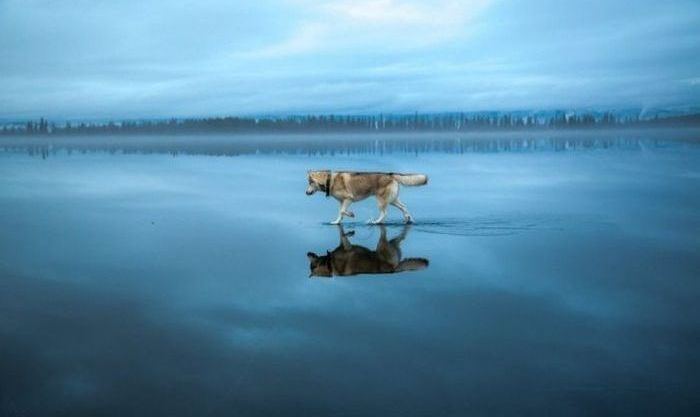|
|
Siberian Husky On A Frozen Lake
|
Dedicated to the indomitable spirit of the sled dogs that relayed antitoxin six hundred miles over rough ice, across treacherous waters, through Arctic blizzards from Nenana to the relief of stricken Nome in the winter of 1925. Endurance · Fidelity · Intelligence
In 1930, exportation of the dogs from Siberia was halted. The same year saw recognition of the Siberian Husky by the American Kennel Club. Nine years later, the breed was first registered in Canada. The United Kennel Club recognized the breed in 1938 as the "Arctic Husky," changing the name to Siberian Husky in 1991. Seppala owned a kennel in Nenana before moving to New England, where he became partners with Elizabeth Ricker. The two co-owned the Poland Springs kennel and began to race and exhibit their dogs all over the Northeast.
As the breed was beginning to come to prominence, in 1933 Navy Rear Admiral Richard E. Byrd brought about 50 Siberian Huskies with him on an expedition in which he hoped to journey around the 16,000-mile coast of Antarctica. Many of the dogs were trained at Chinook Kennels in New Hampshire. Called Operation Highjump, the historic trek proved the worth of the Siberian Husky due to its compact size and greater speeds. Siberian Huskies also served in the United States Army's Arctic Search and Rescue Unit of the Air Transport Command during World War II. Their popularity was sustained into the 21st century. They were ranked 16th among American Kennel Club registrants in 2012, rising to 14th place in 2013.
The original sled dogs bred and kept by the Chukchi were thought to have gone extinct, but Benedict Allen, writing for Geographical magazine in 2006 after visiting the region, reported their survival. His description of the breeding practiced by the Chukchi mentions selection for obedience, endurance, amiable disposition, and sizing that enabled families to support them without undue difficulty.
|
|









